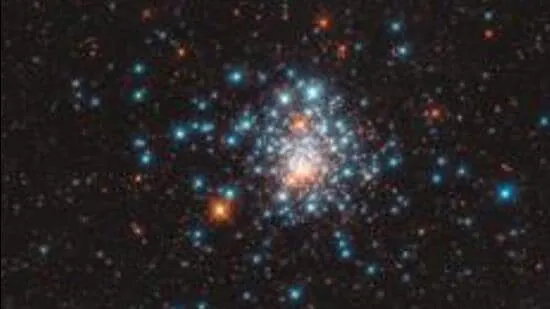
Mind-Blowing Discovery: NASA and Astro Sat Uncover Eruptions from Stellar Wreckage Around Massive Black Hole!
2024-10-12
Author: Nur
Introduction
An international team of astronomers, including experts from India’s Inter-University Centre for Astronomy and Astrophysics (IUCAA), has made a groundbreaking discovery that unveils a fascinating connection between two intriguing phenomena in the universe. The research reveals how a star is repeatedly colliding with the remnants of another star that was ripped apart by a massive black hole. This thrilling dance of destruction occurs approximately every 48 hours, producing intense explosions of X-rays from a source known as AT2019qiz.
Quasi-Periodic Eruptions (QPEs)
This sensational study provides a vital link to a newly identified category of astronomical phenomena known as quasi-periodic eruptions (QPEs). These are bright flashes originating from the heart of galaxies, detectable solely in X-rays and characterized by mysterious repetition. Until now, the relationship between these bursts and other celestial events was only hypothesized.
Observational Techniques and Findings
Utilizing an array of powerful telescopes, including NASA's Chandra, Hubble, NICER, and Swift, alongside India’s Astro Sat, researchers observed how a massive black hole has not only obliterated one star but is now bombarding another with explosive power. The finding sheds light on previously murky connections between tidal disruption events (TDEs) – situations where stars are annihilated by black holes – and these unexplained QPEs, marking a significant advance in our understanding of cosmic phenomena.
Destruction Event Observed in 2019
In a chilling account, astronomers first observed this destructive event back in 2019 when a star ventured too close to the black hole, getting torn apart by its powerful gravitational pull. The remnants began to circulate the black hole, forming a debris disk that has since expanded and now intersects the orbit of a second star, which was once safe. This nearby star is now caught in a chaotic cycle, striking the debris disk every two days and producing spectacular bursts of X-rays that have captivated astronomers.
Quotes from the Researchers
Matt Nicholl, the lead author of the study published in the prestigious journal ‘Nature,’ likened the situation to a diver making splashes in a pool with each dive. "Imagine a diver repeatedly going into a pool and creating a splash every time s/he enters the water. The star is like the diver, and each impact creates massive 'splashes' of gas and X-rays into the cosmos," he described.
Amid growing excitement, co-author Dheeraj Pasham of the Massachusetts Institute of Technology highlighted the significance of the connection made in this study. "For a long time, there had been intense speculation that both phenomena were linked. Now, we've provided evidence that ties them together—it's like a cosmic two-for-one in terms of solving celestial mysteries!"
Historical Context and Future Research
This astonishing study delves into past events like AT2019qiz, first detected in 2019 by the Zwicky Transient Facility at Palomar Observatory. Recently in 2023, the Chandra and Hubble Space Telescopes provided further insights into the aftermath, revealing striking details during several observations.
Gulab Dewangan from IUCAA noted the crucial role that India’s Astro Sat mission played in these observations. "Astro Sat's capabilities, especially with its Soft X-ray Telescope and Ultra-Violet Imaging Telescope (UVIT), were vital in capturing the source AT2019qiz," Dewangan explained. He emphasized that ongoing and future research with simultaneous observations in X-ray and UV ranges will deepen our understanding of these phenomena.

 Brasil (PT)
Brasil (PT)
 Canada (EN)
Canada (EN)
 Chile (ES)
Chile (ES)
 España (ES)
España (ES)
 France (FR)
France (FR)
 Hong Kong (EN)
Hong Kong (EN)
 Italia (IT)
Italia (IT)
 日本 (JA)
日本 (JA)
 Magyarország (HU)
Magyarország (HU)
 Norge (NO)
Norge (NO)
 Polska (PL)
Polska (PL)
 Schweiz (DE)
Schweiz (DE)
 Singapore (EN)
Singapore (EN)
 Sverige (SV)
Sverige (SV)
 Suomi (FI)
Suomi (FI)
 Türkiye (TR)
Türkiye (TR)